#world fiction
Explore tagged Tumblr posts
Text

just read: Idol, Burning by Rin Usami
I thought the premise of this book is excellent and it starts with a bang (a hardocre fangirl learns her oshi has punched a fan) so I like that it immediately puts you into the action of the story. The concept is good, exploring fandom culture, mental health, modern life and how fanaticism can interact with these things.
But I thought it was just a little thin in the way it delved into it's themes. I get it's a short book, but my issue was more it felt the author didn't exactly have too much to say. Almost like a bullet list worth of points rather than a grand revelation.
That said, the research was very good it did feel very accurate to fandom spaces as I know them and the use of social media in this book was very good. I also quite liked the ending and found the characters inner monologue, how she has this grand revelation that for all her fanaticism and research, there are people who KNOW these idols and she will never be one of them, super well done. It's also funny where it needs to be, I liked that.
The book itself aside, I struggled with this translation at times. A little too clunky for me.
genres: contemporary, translated
translator: Asa Yoneda
rating: 3 star
themes: fandom and social media, depression and mental health, modern society, religion and fanaticism
'My oshi was on fire. Word was he'd punched a fan'
High-school student Akari has only one passion in her life: her oshi, her idol. His name is Masaki Ueno, best known as one-fifth of Japanese pop group Maza Maza.
Akari’s dedication to her oshi consumes her days completely. She keeps a blog entirely devoted to him, religiously chronicling and analysing all his events. He is the spine of her life; she cannot survive without him. When Masaki is rumoured to have assaulted a female fan, facing waves of social media backlash, Akari’s world falls apart.
Offering a vivid insight into otaku culture and adolescence, Idol, Burning is a brilliantly gripping story of obsession, coming of age and the addictive, relentless nature of fandom culture.
#idol burning#rin usami#world fiction#translated fiction#women in translation#east asian lit#asia#japan
5 notes
·
View notes
Text
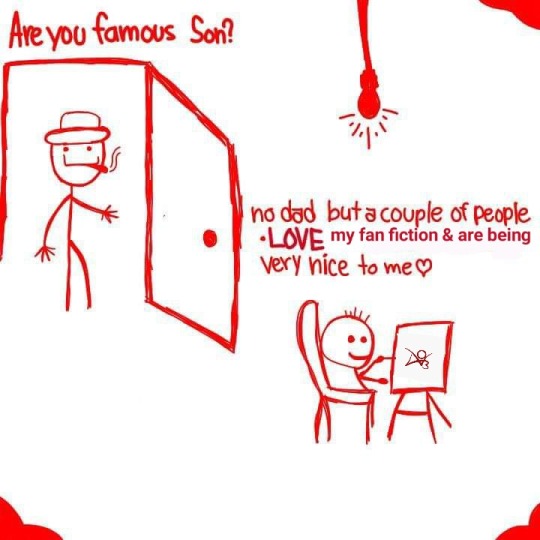
#ao3fic#ao3#ao3 memes#fan fiction#fan fic writing#fan fic writers#fan fiction memes#those 16 bookmarks mean the world to me#this is literally me
104K notes
·
View notes
Text
[⚠️The Amazing Digital Circus SPOILERS] This episode was interesting!
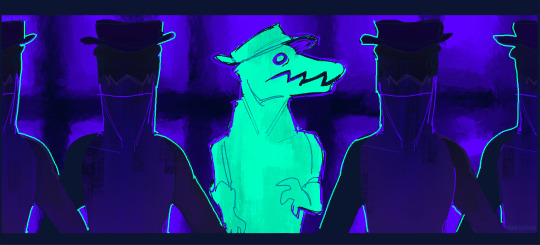

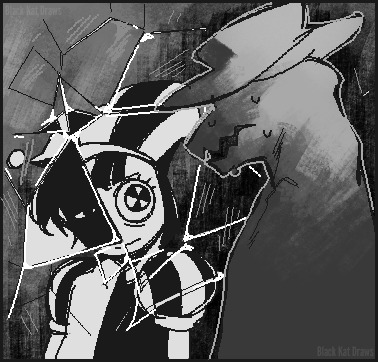
#i REALLY like gummigoo#im just into characters who realize theyre in a fictional world and become self-aware dont mind me la la la~#anyway i like the guy and he's a very interesting character#a bit disappointed at what happened to him at the end though#but hey i'll take what i can get#this episode was unexpectedly sweet considering the chaos of the first episode#pomni realizing that she wasnt alone in this was really nice#the amazing digital circus#digital circus#amazing digital circus#the digital circus#the amazing circus#tadc#tadc pomni#tadc ragatha#tadc gangle#tadc zooble#tadc jax#tadc kinger#tadc gummigoo#my drawing museum
15K notes
·
View notes
Text
you can pry happy endings from my cold-dead hands. It can be the most heart stopping, gut wrenching fic that has every existed and I will read every drop of it if I get my happy ending. I have had enough painful endings in real life, give me happy in my fantasy world. It can be at the last second, it can be a single sentence, even a single word. Give me all the angst and hurt in the world for 500,000 words, but please give me the comfort I need in the ending. please and thank you.
#do I love angst? yes. but also need to be happy in my delulu world for five seconds#sometimes you need domestic fluff to soothe the burn#fan fiction#ao3#hurt/comfort#steddie#stranger things#lumax#byler#ronance#steve harrington#Eddie Munson#archive of our own#wattpad#robin buckley#steve x eddie#happy endings
24K notes
·
View notes
Text

The way some of you will jump at the chance to try and hate on Sam is...... Troubling
#some of you are getting too comfortable showing your true colors through fiction#sam wilson#captain america#captain america brave new world#cabnw#bucky barnes#sambucky
2K notes
·
View notes
Text
50 Character Personality Traits + Meanings (For writers, worldbuilders, and artists) Part 1
Adventurous - Enjoys trying new experiences and exploring the unknown.
Ambitious - Driven to succeed and achieve their goals.
Analytical - Tends to think critically and examine things in-depth.
Artistic - Highly creative and expresses themselves through artistic mediums.
Assertive - Confident in expressing their thoughts and feelings.
Caring - Shows compassion and concern for the well-being of others.
Charismatic - Has a natural charm and appeal that draws people in.
Clever - Able to come up with creative solutions and make astute observations.
Compassionate - Displays empathy and a desire to help those in need.
Confident - Believes in their own abilities and is self-assured.
Conscientious - Reliable, responsible, and attentive to detail.
Curious - Eager to learn new things and explore the world around them.
Cynical - Tends to be skeptical and distrustful of others' motives.
Dependable - Can be counted on to follow through on their commitments.
Determined - Persistent in pursuing their goals and overcoming challenges.
Diplomatic - Skilled at navigating social situations and resolving conflicts.
Eccentric - Displays unconventional or unusual behaviors and interests.
Empathetic - Able to understand and share the feelings of others.
Ethical - Guided by a strong moral compass and a sense of right and wrong.
Extraverted - Enjoys being around people and draws energy from social interactions.
Flexible - Adaptable to changes and open to trying new approaches.
Forgiving - Willing to let go of past hurts and give people second chances.
Friendly - Approachable and enjoys building positive relationships with others.
Grounded - Practical, down-to-earth, and focused on the present.
Hardworking - Diligent and dedicated in their efforts to achieve their goals.
Honest - Values truthfulness and integrity in their words and actions.
Idealistic - Driven by a vision of how the world should be and a desire to make a difference.
Imaginative - Possesses a rich inner world and creative problem-solving abilities.
Independent - Prefers to think and act for themselves without relying on others.
Indecisive - Struggles with making decisions and often second-guesses themselves.
Introverted - Finds energy and fulfillment in solitary activities and introspection.
Jealous - Experiences feelings of resentment or insecurity towards others.
Kind - Gentle, considerate, and thoughtful in their treatment of others.
Leaders - Able to inspire and guide others towards a common goal.
Logical - Approaches problems and decisions through a rational, analytical lens.
Materialistic - Highly values the acquisition of possessions and wealth.
Organized - Maintains order and efficiency in their personal and professional life.
Perfectionistic - Strives for flawlessness and can be overly critical of themselves and others.
Pessimistic - Tends to focus on the negative aspects of situations and expect the worst.
Resilient - Able to bounce back from setbacks and adapt to changes.
Risk-taker - Willing to take chances and step outside of their comfort zone.
Sarcastic - Uses irony and witty remarks to convey their thoughts and feelings.
Sensitive - Deeply affected by the emotions and experiences of themselves and others.
Stubborn - Unwilling to change their mind or compromise on their beliefs and opinions.
Suspicious - Inclined to doubt the motives and intentions of others.
Thoughtful - Considerate of the impact their words and actions have on others.
Timid - Shy, reserved, and hesitant to take risks or assert themselves.
Trustworthy - Reliable, honest, and worthy of confidence.
Unpredictable - Displays an element of surprise and spontaneity in their behavior.
Witty - Possesses a quick, clever, and humorous way of expressing themselves.
Hey fellow writers! I'm super excited to share that I've just launched a Tumblr community. I'm inviting all of you to join my community. All you have to do is fill out this Google form, and I'll personally send you an invitation to join the Write Right Society on Tumblr! Can't wait to see your posts!

#creative writing#writeblr#writing#thewriteadviceforwriters#on writing#writing tips#writers block#how to write#writers and poets#authors on tumblr#author#fiction#women writers#book writing#writer#writing advice#novel writing#writing blog#writer stuff#writers#writerscommunity#artists on tumblr#small artist#oc artist#world building#writersblock#writers on tumblr#helping writers#resources for writers#writerslife
4K notes
·
View notes
Text
Teyvat's "Most Down Bad" Award Goes to Alhaitham for a Second Year Running

Seeing everyone making fun of Alhaitham for his "stalkerish" tendencies in this event is funny, because I feel like a lot of people missed that "Be literally everywhere Kaveh is" has been Alhaitham's MO from the day Kaveh appeared in the game.
From only grabbing his house keys after Kaveh returned from the desert (he couldn't have had both sets of keys at the end of the Archon Quest unless he went home and got Kaveh's copy) to ditching conversations to get back to his house only after Kaveh came home, to showing up without any warning or explanation in Kaveh's hangout with some ridiculous excuse about hearing his voice through noise-cancelling headphones... Refusing to offer any help in the Temple of Silence story quest other than staying in the library with Kaveh...

Since when does Alhaitham willingly cover anyone else's duties?
But this trend of "Be everywhere Kaveh is" didn't start when they were adults. It was already in place when they were still Akademiya students--and it's a trend that didn't end even when they had their fight.

Even when they weren't speaking, Alhaitham dogged Kaveh's every step through published responses to Kaveh's research articles in academic journals. He insisted on keeping a line of communication between himself and Kaveh open, even if the only way to do that was through very public ideological clashes. Pulling Kaveh's pigtails to get his attention lolol. It's implied that, for at least the few years between their fight and Kaveh moving in, this was the only communication between them--Alhaitham's refusal to allow their connection to entirely fade away. (And the fact that this is revealed in Kaveh's character stories--through his precious journal that records the moments of his life that had the most impact on him--shows just how deeply he values the fact that Alhaitham didn't give up.)

Another relevant side note: Alhaitham never asked Kaveh to give up his half of their house. Knowing half of it belonged to Kaveh, knowing that Kaveh may one day want to reclaim his part of it, knowing that it was listed as theirs, Alhaitham moved into the house and made zero effort to change its ownership. He was completely fine with living in "his and Kaveh's house." The stories suggest it was only months later (or even longer) that Kaveh even noticed he had the house, and he transferred away ownership of his portion without Alhaitham ever asking him (or even seemingly wanting him) to do so.
Please, let that sink in. Alhaitham actively left his grandmother's (presumably comfortable) house to move into "his and Kaveh's house," with no apparent explanation for why, and after doing so, he made no attempt to change that "his and Kaveh's" label. He moved into the house with no promise that Kaveh wouldn't show up on the doorstep the very next day and move in too. It almost feels like another deliberate provocation--I've moved into our house, are you going to come stop me? LBR, if Alhaitham had had his way, Kaveh would have been living there with him from Day 1...
There's also the fact that Kaveh literally can't write on a single message board anywhere in the entire nation of Sumeru without Alhaitham hunting his messages down and responding to them (which absolutely no one else does, by the way).

"NUH-UH!" "UH-HUH." "NUH-UH!"

Alhaitham's own character stories tell us explicitly that one of Alhaitham's defining character traits is "He is never where you need him to be," yet somehow...






Shot, and chaser:

Any time Kaveh is in the slightest bit of need or danger or just wants Alhaitham near, Alhaitham is "coincidentally" exactly where Kaveh needs him to be, whenever Kaveh needs him to be there.
Alhaitham didn't just "happen" to run into Kaveh in Port Ormos, an entirely different city from where he was supposed to be working. He didn't just "happen" to read the same terrible book as Kaveh when we know he otherwise would not waste a moment of his time on poorly-written literature...

He didn't just "happen" to appear when Kaveh was upset and needed a distraction in the House of Daena during Kaveh's hangout. He didn't just "happen" to be sitting around waiting when Kaveh needed answers after the Archon Quest. He didn't just "happen" to find Kaveh's academic publications and every single message board posting and respond to them at length and in public.

Which is exactly what Kaveh's mother told Kaveh he needed.
What level of down bad is "Abusing your powers as an Akademiya employee to keep tabs on your crush's library loans"? Just asking for a friend.
The only person for whom Alhaitham just "happens" to be available is Kaveh, over and over and over again--because he is very deliberately making himself a constant presence in Kaveh's life.


(Like, out of all things, I think people really underestimate the devs deliberately paralleling the romantic relationship between Kaveh's mother and father with Kaveh and Alhaitham's relationship. If you want to point to one thing that says "These two characters are intentionally queer-coded," it doesn't get any more obvious than this.)



Alhaitham, are you not embarrassed to be this transparent??? 🫣
#genshin impact#haikaveh#kavetham#alhaitham#kaveh#I wasn't even looking for half these screencaps#I was just scrolling through the content and “Oops; there's another one”#imagine thinking it's a “coincidence” to run into someone in a desert that stretches hundreds to thousands of miles#I say this in the most positive way possible#but I think Alhaitham might actually need an intervention#bro is reading PULP FICTION for a man#checking the message boards daily for updates from a dude he already lives with#skipping work to do favors for his favorite#I would say his Kaveh hyper-focus is impacting his quality of life#but Kaveh IS his quality of life so...#do you think the merchants in the market are getting savvy#when they see Alhaitham coming they're just like#“Oh Mister Alhaitham! Mister Kaveh was really admiring this painting the last time he came through--”#how many times do you think Alhaitham's brought home new foods only to never buy them again because Kaveh didn't like them?#we could end world deforestation with Alhaitham's pining alone
2K notes
·
View notes
Text
CAPTAIN AMERICA: BRAVE NEW WORLD SPOILERS 👇🏻
ARE YOU JEALOUS? 𓂃 𓈒 ❀
congressman!bucky barnes x fem!readwr



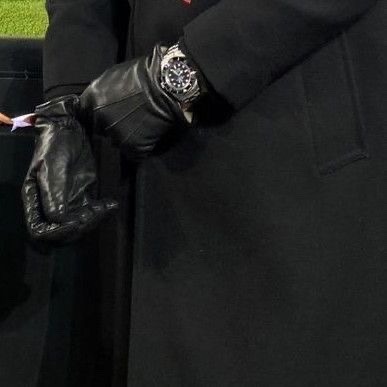

synopsis – bucky finds out that you're jealous about those comments that woman madd about him.
a/n – i hate her and her stupid fucking character better stay away from bucky. free palestine 🇵🇸

joaquin had taken a bad hit during a mission with sam, bad enough to need surgery and land him in the hospital for a few days. being in congress meant bucky had access to that kind of information, and as soon as he saw joaquin’s name in a report, he knew what that meant.
bucky walked into your office without a word, you barely had time to look up before he dropped a file onto your desk.
—good morning to you too, —you teased, raising your eyebrows and looking at the papers he just placed on your desk. then, you looked at him. —not even a kiss for your sweet girlfriend?
he looked ridiculously good in that black suit, broad shoulders filling it out perfectly, the fabric hugging his frame in a way that was almost unfair. his tie was just a little loose, and you had the sudden urge to tug on it and pull him closer. bucky sighed and stepped forward. his metal fingers brushed your cheek before he leaned down and gave a quick kiss to your lips.
you hummed and nodded. —thank you, —you grabbed the papers and opened the file. —you left earlier this morning, i wanted to have breakfast with you.
—yeah, sorry, this came up.
you glanced down at the folder, your eyes scanned the first few lines and then stopped. torres, joaquin – injured in action. bucky exhaled, finally moving. he sat on the edge of your desk, fingers drumming against the wood. —mission went sideways. he took a hit.
you stood up from your chair and went to sit next to him, close enough that your knee brushed against his. —how bad?
bucky sighed. —fractured ribs, concussion, some internal bleeding. they got to him in time, he’s stable but...
—and sam?
—got here this morning.
you closed the file, inhaling slowly to steady yourself. bucky was watching you, waiting for your reaction. you met his gaze and nodded. —then let’s go

before you stepped into the private room, you paused, standing in front of bucky. his gaze was fixed ahead, his jaw tight, he hadn’t said much since the moment you arrived at the hospital. he was trying to figure out what to say to sam.
—you're good, —you said quietly, —sam is our friend, he'd appreciate us being here. —your hand gently coming up to rest on his chest, fixing his tie, —you'd know what to say when you see him.
bucky nodded, his eyes met yours, but you could see the how his gaze softened as he let your words settle in. you stood up on your tiptoes and placed a quick, soft kiss right in the middle of his lips.
you weren’t wrong. as soon as the door opened, sam’s eyes landed on both of you. he looked exhausted, like the weight of the world had been pressing down on him, but the relief in his eyes when he saw you both was undeniable. he also looked at your fingers laced. last time you three were together, things were... complicated. bucky didn't know if he deserved a relationship and sam, being sam, wanted to be supportive but didn't want to rush things between you two. now, seeing you both standing there, so... together, sam felt relief that bucky had come to terms with his own feelings.
you hugged sam and then bucky hugged him. you asked about joaquin's state as you watched through the glass how the surgeons worked.
bucky and sam had the sweetest interaction, you let bucky talk as you stood next to him, holding onto his arm. as you predicted, bucky said exactly what sam needed to hear and by the end of their conversation you noticed how sam felt more confident. then, the phone in bucky's pocket buzzed breaking the moment. he checked the screen and sighed,
—i gotta go, —he said quietly. before he stepped away, he pulled sam into one last hug, holding him tightly. —take care of yourself, alright? —he murmured. once bucky pulled back, he turned to you, his fingers brushing your arm gently before he kissed you on the lips. —see you at home.
sam raised his eyebrows and looked at you when bucky left. —kissing in public, living together, that way he looks at you... you've got him wrapped around your finger.
you laughed and shook your head. you were going to say something but in that moment someone else entered the room.
—future congressman james buchanan barnes.
you frowned. who was talking about your boyfriend? leaning slightly, you peered around sam. standing on the other side of him was a small woman, sharp-eyed, impeccably dressed, exuding authority, but what did she have to say about your bucky?
her gaze was still fixed on the spot where he had just walked away, head tilted slightly like she was noticing something only she could see. wow, were you missing something?
—he's taller in real life. nice smile too, good amount of teeth. great posture.
—he's a 110, —sam added.
—and taken.
the woman finally turned to look at you, her expression unreadable, but there was amusement. she studied you for a second before offering a knowing little smile. —noted.

you got home before bucky did. you figured you’d cook something nice for dinner. you couldn’t share breakfast with him, but you’d make the most of dinner but even as you chopped vegetables and stirred the rice you were preparing, those words echoed in your head. great posture, nice smile.
you scoffed, gripping the knife just a little too tightly. yeah, no shit he has a nice smile. you’d spent enough time staring at it to know that. and his posture? sure, the man stood like he was built from granite, all strong shoulders and perfect stance—but why the hell was she the one noticing it? you wouldn’t have thought you’d be the type to get jealous. it wasn’t like you were insecure—you trusted him completely. but still… something about another woman noticing him, talking about him like that...
you took a deep breath, shaking it off. it was fine. you were fine. you had no reason to feel this way. bucky was yours. he came home to you, kissed you, held you when he thought no one was looking.
bucky called your name, shutting the door behind him. —i'm home.
—i'm in the kitchen! —you said trying to sound casual, even though you were still thinking about that damn conversation from earlier.
bucky approached you and wrapped his arms around you from behind, his chin rested on your shoulder, his beard tickled your skin as he murmured, —smells amazing.
you smiled, proud. —figured we didn’t get breakfast together, so i’d make up for it with dinner.
he hummed in appreciation, planting a kiss on your shoulder.
—how was your day? —you asked as he watched you cook. his presence stopped all the overthinking you'd been doing since you got home for a minute, his touch was reassuring enough to almost make you forgot completely about how the words of that woman made you feel. the way his exhausted body was molding into yours, like he needed you to keep him steady, it all made you feel just a little better.
—long, —he admitted, kissing your shoulder again. —meetings, calls and a whole lot of people telling me what i should be doing.
you hummed in response, —sounds frustrating.
bucky noticed the stiffness in your body almost immediately. you let him hug you, you acted like nothing happened, you even seemed to be glad for his touch yet your body told a different story. but he didn’t let go. instead, his metal hand slid lower, fingers splaying over your stomach while his flesh hand found your hip. —what’s going on in that head of yours? —he murmured against your skin.
—nothing, i was just thinking... it was nice seeing sam, wasn't it? we should invite him over sometime, hang out with him in another circumstances.
bucky wasn't convinced, there was something else, but he agreed with you. —yeah, it was good to see him. it’s been too long since we’ve had a proper catch-up, just the three of us.
you hummed. you couldn’t shake the feeling. you tried to push it down, but you knew you needed to ask. you couldn't hold it in any longer. —did you know that woman? —you asked, trying to keep your tone casual. —the one that came in when you left?
bucky paused for a moment before responding. —yeah, she's head of security of thaddeus ross.
you raised your eyebrows, bucky was looking at you, his chin still resting on your shoulder, yet you were focused on the rice. —she seemed a little too interested in you.
he frowned. —how so?
—oh, she mentioned your nice smile and great posture.
bucky was quiet for a moment, then you felt his chest shake against your back. he was laughing. —you're jealous, —he realized.
you pulled away from his hold and turning to face him, arms crossed, almost offended, not because he wasn't right but because he had figured it out so easily. —no, i'm not.
he smirked as he watched you with knowing eyes. those deep blue eyes. had that woman noticed them too? had she seen how they darkened under the dim lights of the office? or how they became even more shadowed after a restless night? you clenched your jaw.
—yes, you are. you’re jealous over a comment about my posture.
you scoffed. —that’s not— you huffed, shaking your head. that smirk remained on his lips, waiting to see how you tried to explain yourself. —it’s not just that! it’s the way she was looking at you, like she was mentally taking notes. and i know what you're gonna say, she was just doing her job, but she was not just doing her job when she called you well-built with a nice smile like you were some—some political snack.
bucky raised his eyebrows and then couldn't help a laugh escaping his lips at that, shaking his head in disbelief. ugh, he did have the nicest smile. —political snack?
—shut up, —you muttered, your cheeks warming.
he reached for you again, this time catching your waist and pulling you right up against him, his laughter dying down into something softer. —you’re so sexy when you’re jealous, you know that?
you narrowed your eyes at him. —not jealous.
—oh yeah, totally jealous, —he teased, grinning as he leaned closer, lips barely brushing against yours. —and so possessive.
before you could complain again, he pressed his lips against yours. your lips moved in perfect sync, this was exactly what you needed.
his mouth tasted like fruit, sweet and familiar. that damn tropical gum he always chewed. would that woman know that? would she know that he liked it because it reminded him of the time he spent learning himself again, reclaiming parts of his life he thought were lost? that he once moved heaven and earth just to find gum that tasted like plum? would she know that when he chewed peppermint gum, his lips turned pinker than usual because he was so used to the soft, sweet taste of fruit-flavored ones?
you sighed into the kiss, relieved to think that you were the only one who knew these things about him. your hands sliding up to grip his shirt, pulling him impossibly closer.
bucky chuckled against your lips, the vibration sending a pleasant shiver down your spine. he pulled back just enough to murmur, —you’re telling me this death grip on my shirt isn't possessive and jealous?
you refused to let go, using it to pull him into a kiss again. —it’s not.
his metal hand curled around your waist, sliding down until it cupped your ass. bucky pulled back again and you whined, annoyed. he murmured, —so if that woman from earlier showed up right now, you wouldn’t throw something at her? —his smirk was downright smug now, he was enjoying this way too much.
you rolled your eyes. —i wouldn’t throw something at her. i’d throw something near her. just to remind her what’s off-limits.
the smirk never left his lips. he slowly let go of his grip on your body, his metal hand dragging over your skin just enough to make you shiver. then, he took a step back. and another. his eyes never left yours, the challenge clear in them. —and if i walked into another room right now, —he tilted his head, —you wouldn’t follow me to make sure no one else was looking at your man?
you groaned. before he could take another step, your hand shot out, grabbing his tie and yanking him back toward you. he stumbled, his body colliding with yours. his hands instinctively landed on your waist to steady himself. —i wouldn't even let my man walk out of here.
your lips met in another heated kiss, his breath mixing with yours as your fingers tangled deeper into his hair. you felt him shiver slightly under your touch, his grip on your hips tightening as he pressed himself closer. his hair was getting longer. you could feel it, the way your fingers sank into the thick strands, how easily you could grab and tug at it. and god, you loved it like this.
he's taller in real life...
bucky’s hands gripped your waist firmly as he effortlessly lifted you, guiding your legs to wrap around his body. his hands shamelessly moved to your ass as yours went to the back of his head to deepen the kiss. he placed you on the edge of the table, the cold surface pressing against your thighs as he stood between your legs, his hands resting on your hips.
you started to lean back, pulling at his tie and guiding him down with you. his body followed, towering over you. his hands were on either side of your body, holding himself up just enough to keep from fully pinning you to the table.
—you really like this, don’t you? —he murmured against your lips.
you smirked, your fingers kept on tightening his tie, —like what?
his metal fingers squeezed the bare skin of your thighs, a low growl escaped his lips. —being a little brat, —he muttered, his mouth trailing along your jaw, down to the curve of your neck.
you shivered, your head tilting to give him better access. —maybe.
—you’re lucky i like it, —he dragged your pajama pants and your underwear down your legs with ease.
—lucky? —your hands slipped down to the knot of his tie, loosening it and sliding the fabric through your fingers. then, you skillfully unbuttoned his white shirt with urgency. you couldn’t help but moan a quiet fuck under your breath as you pulled his shirt open, your fingers grazing over the defined lines of his torso. perfectly sculpted muscles tensed beneath your touch. your gaze traced the scars along his shoulder where the metal met his skin as you pushed the shirt down his arms.
—very lucky.
... nice smile too, good amount of teeth...
bucky unzipped his pants as you squeezed his body with your thighs. he pushed himself inside of you without warning, you let out a loud moan and held onto his biceps as you felt how he bottomed you.
he smiled, watching your reaction. he then hid his face in your neck. —you really think i don’t know who i belong to? —his voice was lower now, rougher. his hot breath against your skin spiked goosebumps on your body. —you think anyone else could ever touch me the way you do?
... great posture.
you held onto his strong and broad shoulders while your head was thrown back, eyes closed shut, lips parted letting out the most sinful sounds. his flesh-and-blood hand moved to the back of your head so you wouldn't hurt yourself. his back was a bit arched, just enough for his hips to hit that sweet spot inside you every time he trusted into you.
you connected your lips with his as you swallowed his moans. your hands, without any shame, traveled down his muscled and tensed back until they reached his ass. you squeezed it, enjoying yourself and helping him to push into you.
—say it, —bucky said in between moans.
travelling up his tensed back, your fingers curled into the hair at the back of his head, tugging just enough to make him groan, you encircled your legs around his body and locked your ankles over the swell of his ass. you felt that burn sensation in the pit of your stomach. —you’re mine.
he exhaled sharply, pressing a slow, claiming kiss to your throat. his hands traced up your thighs, gripping you like he never wanted to let go. you felt his metal fingers closing a bit tighter, —and you’re mine.
you came digging your nails into his back, your legs around his body squeezing him and bucky let more of his weight settle against you once his orgasm hit him. his pace became faster and harder when he was close, his metal hand on your hips tightened, pressing you firmly against the surface of the table, and you knew that by morning, you'd see the imprint of his fingers on your skin. and you could't complain because you loved it.
even though you knew he’d hate. he never liked seeing the marks he left on you. he’d frown when he saw the faint bruises his grip had left on your hips, running his fingers over them with something like regret in his eyes. he’d mutter something about being too rough, about how he should be more careful. but the truth was that you craved it.
but as much as bucky hated to mark you, he loved when you marked him. it was a reminder that everything was real—that you were real. that it wasn’t some dream he’d wake up from, alone and lost. that he wasn’t the ghost of a man wandering through a life that didn’t belong to him anymore. and when he saw those scratches in his back in the mirror tomorrow, when he felt that sting as his shirt brushed against them, he’d know—he wasn’t just existing. he was living.
you pushed the strands of hair that were falling over his face and some that were sticking to his forehead as you both tried to catch your breaths.
—would you think i'm crazy if i say i don't want her anywhere near you?
bucky huffed a laugh, pulling out of you and letting you sat up on your elbows. —i’d think that you’re, in fact, jealous.
you rolled your eyes. —whatever. but if i heard her talking about your posture again, i swear i'll...
before you could finish the sentence, bucky pressed his lips to yours, cutting you off. his kiss was soft, but there was a quiet intensity behind it, a reassurance that you didn’t need to say more. —maybe there's a touch of craziness, yeah.
#bucky barnes#bucky barnes angst#bucky barnes fluff#bucky barnes smut#bucky barnes x you#bucky barnes x female reader#bucky x y/n#bucky barnes x f!reader#bucky barnes x reader#bucky#james bucky barnes#james buchanan barnes#bucky x reader#bucky fluff#bucky angst#bucky smut#bucky barnes fan fiction#bucky x you#sebastian stan#marvel#the winter soldier#winter soldier#winter soldier smut#marvel smut#marvel angst#marvel fluff#mcu#captain america brave new world#avengers#avengers smut
2K notes
·
View notes
Text
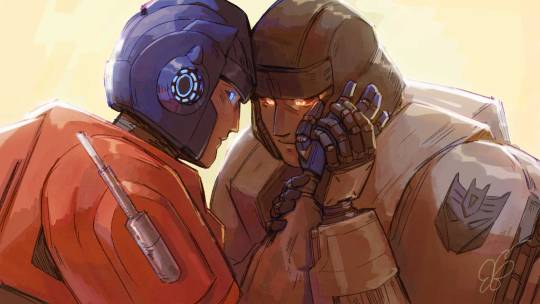
i love normal guys doomed by the narrative
#either that or hilariously dysfunctional or both#tf one#orion pax#d 16#megop#megatron#optimus prime#my art#saw one post pointing out in the trailer that a like5 frame shot of megatrons cannon that was snuck between their mahoushoujo type transfor#mations and like.messed up deeply messed up u see how goofy best friends orion and megsy are theyre just silly guys but in every telling of#their story they always end up enemies ok like in a meta multiverse hopping way think about it.like oh my god prewar tfp megop was already j#juicy and earthspark divorced-remarried megop is like.RGHFH tf one is going to destroy me bc this is what they had Before do u get me#before the war before they fell apart before friends became enemies and hands were stained before the beginning of the end im so so normal#like ok.this silly tight goofy buddy dynamic thats shown in tf one so far is.is what they had before. its what they could have kept if only#if only things turned out differently. but in every world optimus prime and megatron end up leading opposite sides of the bloodiest war ever#ok.its a universal fact and everyone who knows any transformers knows this BUT THE CHARACTERS DONT THEYRE POWERLESS TO PREVENT IT#ill clean up these tags in the morning but like im so.so normal about fictional robot guys#anyway i was intending to draw a background for this but i got lazy and also spent too long on the hands!!!!so whatever
6K notes
·
View notes
Text

just read: Lady Joker by Kaoru Takamura
This is a complex crime fiction novel loosely based upon the Monster with 21 Faces case. It's also quite lengthy, to me possibly slightly overlong, but still very well plotted and paced.
I'd describe this book as challenging, but rewarding. It's detailed and complex, with a large cast of characters which weave in and out of the narrative. An expansive look at modern Japan, capitalism, greed and crime this novel is thematically rich and immersive.
Some parts were more entertaining then others and yet, I never felt my interest waning. I did find some of the cultural touchpoints and references eluded me - a Japanese person I think would feel more connected to this. And yet I was happy to come along for the ride anyway.
One highlight is the translation - it's excellently done. Meticulous prose that never feels clunky or confusing.
genres: crime
translator: Marie Iida and Allison Markin Powell
rating: no rating
themes: capitalism and greed, corporate corruption, crime and justice, post-war Japan
One of Japan’s great modern masters, Kaoru Takamura, makes her English-language debut with this two-volume publication of her magnum opus.
Tokyo, 1995. Five men meet at the racetrack every Sunday to bet on horses. They have little in common except a deep disaffection with their lives, but together they represent the social struggles and griefs of post-War Japan: a poorly socialized genius stuck working as a welder; a demoted detective with a chip on his shoulder; a Zainichi Korean banker sick of being ostracized for his race; a struggling single dad of a teenage girl with Down syndrome. The fifth man bringing them all together is an elderly drugstore owner grieving his grandson, who has died suspiciously after the revelation of a family connection with the segregated buraku community, historically subjected to severe discrimination.
Intent on revenge against a society that values corporate behemoths more than human life, the five conspirators decide to carry out a heist: kidnap the CEO of Japan’s largest beer conglomerate and extract blood money from the company’s corrupt financiers.
Inspired by the unsolved true-crime kidnapping case perpetrated by "the Monster with 21 Faces", Lady Joker has become a cultural touchstone since its 1997 publication, acknowledged as the magnum opus by one of Japan’s literary masters, twice adapted for film and TV and often taught in high school and college classrooms.
#lady joker#kaoru takamura#world fiction#translated fiction#women in translation#east asian lit#asia#japan
5 notes
·
View notes
Text
MLMs are the mirror-world version of community organizing
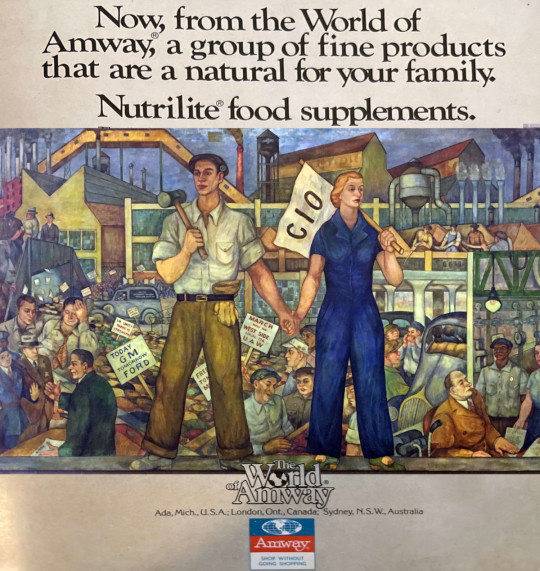
If you'd like an essay-formatted version of this post to read or share, here's a link to it on pluralistic.net, my surveillance-free, ad-free, tracker-free blog:
https://pluralistic.net/2025/02/05/power-of-positive-thinking/#the-socialism-of-fools

In her unmissable 2023 book Doppelganger, Naomi Klein paints a picture of a "mirror world" of right wing and conspiratorial beliefs that are warped, false reflections of real crises:
https://pluralistic.net/2023/09/05/not-that-naomi/#if-the-naomi-be-klein-youre-doing-just-fine
For example, Qanon's obsession with "child trafficking" is a mirror-world version of the real crises of child poverty, child labor, border family separations and kids in cages. Anti-vax is the mirror-world version of the true story of the Sacklers and their fellow opioid barons making billions on Oxy and fent, with the collusion of corrupt FDA officials and a pliant bankruptcy court system. Xenophobic panic about "immigrants stealing jobs" is the mirror world version of the well-documented fact that big business shipped jobs to low-waged territories abroad, weakening US labor and smashing US unions. Cryptocurrency talk about "decentralization" is the mirror-world version of the decay of every industry (including tech) into a monopoly or a cartel.
Klein is at pains to point out that other political thinkers have described this phenomenon. Back in the 19th century, leftists called antisemitism "the socialism of fools." Socialism – the idea that working people are preyed upon by capital – is reflected in the warped mirror as "working people are preyed upon by international Jewish bankers."
The mirror world is a critical concept, because it shows that far right and conspiratorial beliefs are often uneasy neighbors with real, serious political movements. The swivel-eyed loons have a point, in other words:
https://locusmag.com/2023/05/commentary-cory-doctorow-the-swivel-eyed-loons-have-a-point/
Once you understand the mirror world, you start to realize that many right wing conspiracists could have been directed into productive movements, if only they'd understood that their problems were with systems, not sinister individuals (this is why Trump has ordered a purge of any federally funded research that contains the word "systemic"):
https://mamot.fr/@[email protected]/113943287435897828
This also explains why the "tropes" of right wing conspiratorialism sometimes echo left wing, radical thought. I once had a (genuinely unhinged) dialog with a self-described German "progressive" who told me that criticizing the finance industry as parasitic on the real economy was "structurally antisemitic." Nonsense like this is why Klein's "mirror world" is so important: unless you understand the mirror world, you can end up believing that "progressive" just means "defending anything the right hates."
Historian Erik Baker is the author of a new book, Make Your Own Job: How the Entrepreneurial Work Ethic Exhausted America, which has some very interesting things to say about the mirror world:
https://www.hup.harvard.edu/books/9780674293601
In a recent edition of the always-excellent Know Your Enemy podcast, the hosts interviewed Baker about the book, and the conversation turned to the subject of pyramid schemes, the "multilevel marketing systems" that are woven into so many religious, right-wing movements:
https://www.dissentmagazine.org/blog/know-your-enemy-the-entrepreneurial-ethic/
MLMs have it all: prosperity gospel ("God rewards virtue with wealth"), atomization ("you are an entrepreneur and everyone in your life is your potential customer"), and rabid anti-Communism ("solidarity is a trick to make you poorer").
The rise of the far right can't be separated from the history of MLMs. The modern MLM starts with Amway, a cultlike national scam that was founded by Jay Van Andel and Richard DeVos (father-in-law of Betsy DeVos).
Rank-and-file members of the Amway cult lived in dire poverty, convinced that their financial predicament was their own fault for not faithfully following the "sure-fire" Amway method for building a business. Andrea Pitzer's gripping memoir of growing up in an Amway household offers a glimpse of the human cost of the cult:
https://www.theatlantic.com/ideas/archive/2025/01/amway-america/681479/?gift=j9r7avb6p-KY8zdjhsiSZxYkntna5M_rYEv4707Zqqs
Amway – and MLMs like it – don't just bleed out their members by convincing them to buy mountains of useless crap they're supposed to sell to their families, while enriching the people at the top of the pyramid who sell it to them. The "toxic positivity" of multi-level marketing cults forces members deep into debt to pay for seminars and retreats where they are supposed to learn how to repair the personal defects that keep them from being "successful entrepreneurs." The topline of the cult isn't just getting rich selling stuff – they're making bank by selling false hope, literally, in Hilton ballrooms and convention centers across the country, where hearing an MLM scammer berate you for being a "bad entrepreneur" costs thousands of dollars.
Amway destroyed so many lives that Richard Nixon's FTC decided to investigate it. The investigation wasn't going well for Amway, which was facing an existential crisis that they were rescued from by Nixon's resignation. You see, Nixon's successor, Gerald Ford, was the former Congressman of Amway co-founder Jay Van Andel, who was also the head of the US Chamber of Commerce, the most powerful business lobbyist in America.
At Ford's direction, the FTC exonerated Amway of all wrongdoing. But it's even worse than that: Ford's FTC actually crafted a rule that differentiated legal pyramid schemes from illegal ones, based on Amway's destructive business practices. Under this new rule, any pyramid scheme that had the same structure as Amway was presumptively legal. Every MLM operating in America today is built on the Amway model, taking advantage of the FTC's Amway rule to operate in the open, without fear of legal repercussions.
MLMs prey on the poor and desperate: women, people of color, people in dying small towns and decaying rustbelt cities. It's not just that these people are desperate – it's that they only survive through networks of mutual aid. Poor women rely on other poor women to help with child care, marginalized people rely on one another for help with home maintenance, small loans, a place to crash after an eviction, or a place to park the RV you're living out of.
In other words, people who lack monetary capital must rely on social capital for survival. That's why MLMs target these people: an MLM is a system for destructively transforming social capital into monetary capital. MLMs exhort their members to mine their social relationships for "leads" and "customers" and to use the language of social solidarity ("women helping women") to wheedle, guilt, and arm-twist people from your mutual aid network into buying things they don't need and can't afford.
But it's worse, because what MLMs really sell is MLMs. The real purpose of an MLM sales call is to convince the "customer" to become an MLM salesperson, who owes you a share of every sale they make and is incentivized to buy stock they don't need (from you) in order to make quotas. And of course, their real job is to sign up other salespeople to work under them, and so on.
An MLM isn't just a pathogen, in other words – it's a contagion. When someone in your social support network gets the MLM disease, they don't just burn all their social ties with you and the people you rely on – they convince more people in your social group to do the same.
Which brings me back to the mirror world, and Erik Baker's conversation with the Know Your Enemy podcast. Baker starts to talk about who gets big into Amway: "people who already effectively lead by the force of their charisma and personality many other people in their lives. Right? Because you're able to sell to those people, and you're able to recruit those people. What are we talking about? Well, they're effectively recruiting organizers, people who have a natural capacity for organizing and then sending them out in the world to organize on behalf of Christian capitalism."
Listening to this, I was thunderstruck: MLM recruiters are the mirror world version of union organizers. In her memoir of growing up in Amway, Andrea Pitzer talks about how her mom would approach strangers and try to lead them through a kind of structured discussion:
Everywhere we went—the mall, state parks, grocery stores—she’d ask people whether they could use a little more money each month. “I’d love to set up a time to talk to you about an exciting business opportunity.” The words should have seemed suspect. Yet people almost always gave her their number. Her confidence and professionalism were reassuring, and her enthusiasm was electric, even, at first, to me. “What would you do with $1 million?” she’d ask, spinning me around the kitchen.
This kind of person, having this kind of dialog, is exactly how union organizers work. In A Collective Bargain, Jane McAlevey's classic book on labor organizing, she describes how she would seek out the charismatic, outgoing workers in a job-site, the natural leaders, and recruit them to help bring the other workers onboard:
https://pluralistic.net/2023/04/23/a-collective-bargain/
Organizer training focuses on how to have a "structured organizing conversation," which McAlevey described in a 2019 Jacobin article:
“If you had a magic wand and could change three things about life in America [or her town or city or school], what would you change?” The rest of your conversation needs to be anchored to her answers to that question.
https://jacobin.com/2019/11/thanksgiving-organizing-activism-friends-family-conversation-presidential-election
The MLM conversation and the union conversation have eerily similar structures, but the former is designed to commodify and destroy solidarity, and the latter is designed to reinforce and mobilize solidarity. Seen in this light, an MLM is a mirror world union, one that converts solidarity into misery and powerlessness instead of joy and strength.
The MLM movement doesn't just make men like Rich De Vos and Jay Van Andel into billionaires. MLM bosses are heavy funders of the right, a blank check for the Heritage Foundation. Trump is the MLM president, a grifter who grew up on the gospel of Norman Vincent Peale – a key figure in MLM cult dynamics – who tells his followers that wealth is a sign of virtue. Trump boasts about all the people he's ripped off, boasting about how getting away with cheating "makes me smart":
https://pluralistic.net/2024/12/04/its-not-a-lie/#its-a-premature-truth
The corollary is that being cheated means you're stupid. Caveat emptor, the motto of the cryptocurrency industry ("not your wallet, not your coins") that spent hundreds of millions to get Trump elected.
Tech has its own mirror world. The people who used tech to find fellow weirdos and make delightful and wonderful things are mirrored by the people who used tech to find fellow weirdos and call for fascism, ethnic cleansing, and concentration camps.
In Picks and Shovels, my next novel (Feb 17), I introduce readers to a fictitious 1980s religious computer sales cult called Fidelity Computing, run by an orthodox rabbi, a Catholic priest and a Mormon rabbi:
https://us.macmillan.com/books/9781250865908/picksandshovels
Fidelity is a faith scam, a pyramid scheme that is parasitic upon the bonds of faith and fellowship. Martin Hench, the hero of the story – a hard-fighting high tech forensic accountant – goes to work for a competing business, Computing Freedom, run by three Fidelity ex-employees who have left their faiths and their employers to pursue a vision of computers that is about liberation, rather than control.
The women of Computing Freedom – a queer orthodox woman who's been kicked out of her family, a Mormon woman who's renounced the LDS over its opposition to the Equal Rights Amendment, and a nun who's left her order to throw in with the Liberation Theology movement – are all charismatic, energetic, inspirational organizers.
Because of course they are – that's why they were so good at selling computers for the Reverend Sirs who sit at the top of Fidelity Computing's pyramid scheme.
Hearing Baker's interview and reading Pitzer's memoir last week made it all click together for me. Not just that MLMs destroy social bonds, but that within every person who gets sucked into an MLM, there's a community organizer who could be building the bonds that MLMs destroy.
#pluralistic#amway#mlm#picks and shovels#martin hench#devos#that makes me smart#rich devos#mirror world#doppelganger#naomi klein#crime fiction#technothrillers#books#cults
1K notes
·
View notes
Text
A Workshop for Creating Magical/ Fictional Crystals: A Guide from a Geologist
Hi folks, its me, here to talk about fictional writing again! Today I'm just tackling the idea of magical stones/mana stones by looking at existing minerals today and some neat properties that they have, and how you can apply these things to a fictional world. The goal is mainly to help you if you are stuck trying to come up with a unique magic system, or a unique identification/characteristic of your mineral.
First Things First: Mineral Shapes

I am exhausted, petered out, down-right fatigued by seeing every mineral depicted with having the crystal structure of calcite and quartz. There are soooooo many cooler, more interesting crystal structures, don't you think you would stop and take a look at a perfect cube in nature? It is completely unsettling.
Second: Color
Color within minerals can either be really important, or not important at all! It is your choice to decide if color is going to be something that means something to your mineral. But what are some times when the color is important? Well.... there are some elements that are called chromophores, this classification just indicates that these elements, when present, will determine the color of whatever they are in. So, if you wanted to treat mana like a chromophore, you could say, "Oh everything that contains mana turns green!" This could mean that regardless of the mineral, if that mineral is a specific color, it means it contains mana. This concept is exciting because you can just stop here and use minerals that already exist! You can also use it as an indicator for a magical ore! Chromophores are typically metals, so if you are making a new metal weapon, making the ore of that metal a unique color would make a lot of sense!
However, your mineral can also just be every color of the rainbow like quartz and perhaps that's what makes identifying your mana stones elusive and create an illusion of scarcity that your character can solve.

There are other things that can change the colors of minerals, like radiation damage, and electron exchange, but I think that is beyond what would be helpful! So lets talk about some unique color properties that happen in nature that seem magical in the first place! Maybe you don't need to design a mana stone, but you want a unique gemstone that only the royal family passes down or something (IDK).
The first one is the alexandrite effect! This is where a mineral can change color in natural light vs. incandescent light. (the mineral itself is not changing, but the lights contain different amounts of different colors that then get absorbed by the stone). Even if you don't use electricity in your fictional world, you could have the colors change in the presence of light magic. This could create fun misunderstandings about what the mineral is reacting to!
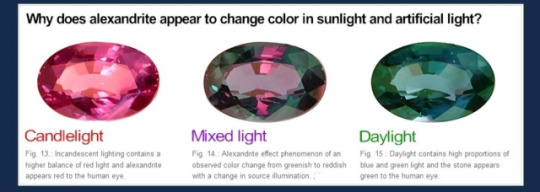
Pleochroism
Pleochroism is something that most minerals have, it is frequently used to help identify minerals in thin sections, however minerals are usually not pleochroic enough for it to be visible to the naked eye! Pleochroism is just a fancy name to describe the change in how light is absorbed based on the angle of the mineral! So if you scroll up to the first image where I showed a lot of crystal shapes, most of them have angles where they are longer and shorter! This will effect the way light travels in the crystal. Tanzanite is a popular mineral that does this.

Photochromism
This is when a mineral will change color (in a reversible way) when exposed to UV light (or sunlight), I am not going to go too into the details of why this is happening because it would require me to read some research papers and I just don't feel like it. The mineral that is best known for this is Hackmanite!

Alright! These are all the really cool color effects that might inspire you or maybe not, but now I am going to talk about how you might find your minerals within a rock!
When I see a lot of magical caves/mines, typically I see them with some variation of a geode honestly, but most minerals are not found like that! Now I am sure most of you guys have seen a geode, so I will not really talk about those, but I will talk briefly about porphyroblasts which is when the mineral grows larger than the minerals around it, this happens in metamorphic minerals!

sorry random stranger, but this is an image of garnets inside a finer-grained rock at gore mountain in New York!
Another way you might find minerals is in a pegmatite! This is when all minerals are really large! This is a formed from really slow crystalizing magma!
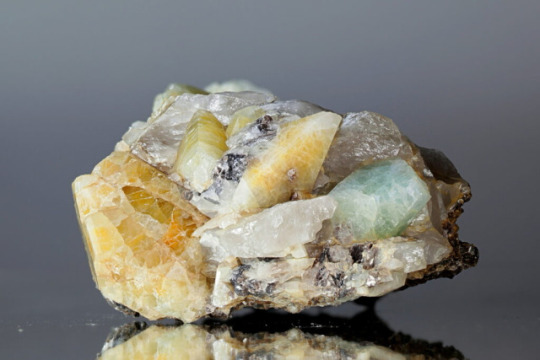

But something else to think about is that your mineral might just be massive, it doesn't have to have distinct crystals, it may be similar to jadeite where small grains grow together which leaves it looking smooth and seamless! A note about all of these is that you would have to mine into the rock to find these, there would not be any natural caves in these rocks! Caves are only ever really formed in limestones and maybe marbles (rocks that react with acid).

How can your characters identify these minerals?
Typically when you are out in the field you will look to see what type of rocks the minerals are found in (The overall texture of the rock will tell you how it formed). If you know how the rock formed, it will narrow down the amount of minerals you need to think about by quite a bit! Next, you are going to look closely at it and observe its crystal structure, does it have an obvious crystal? if so what is the general shape? If it is broken, how did it break? Did it fracture like glass or did it break along uniform planes. Some minerals have a thing called cleavage (breaks along planes of weakness). If a mineral exhibits this habit, it will again help narrow this down. Next we can look at color. Color can be misleading, because minerals like quartz can be any color imaginable, but minerals like olivine will always be green! The next thing your character can do is test for hardness, minerals all have a specific hardness that can help identify it as well.
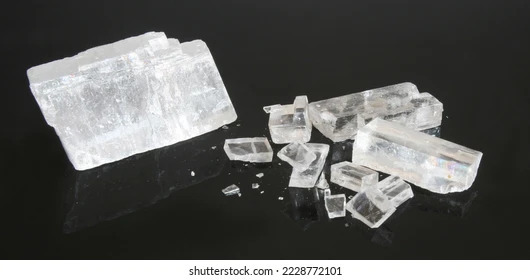
After you go through all of this, your mineral might have some special property! This could be magnetism, fluorescence, reactions to acid, or any of the color changing effects I mentioned above! Other than that, your character can take it back to a lab and do a number of things to identify it, but the most typical thing would be for them to make a thin section (very thin piece of the rock) and observe it under a cross polarized microscope!

On that note folks! I hope this helped in some way in thinking of new magic mineral properties! I have other guides that explore some different fictional worldbuilding issues you might run into, but if you have any topics you would like me to cover please that I haven't mentioned already, let me know!
#geology#rocks#creative writing#fictional world#worldbuilding#dnd#dnd worldbuilding#worldbuilding stuff#writing resources#info post#information#writing
6K notes
·
View notes
Text
the garashir pipeline

#pwp (politics with porn)#please send help im more invested in fictional alien politics than real world politics what the fuck#garashir#julian bashir#elim garak#ds9#star trek ds9#deep space nine#star trek deep space nine#star trek
1K notes
·
View notes
Text
GUYS
Idk if someone else has thought of this before, but hear me out on this new worldbuilding headcanon for Minecraft. Phantoms pose the same ecological role as IRL vultures. That being, they eat dead bodies. The reason a lot of them swarm (and even attack) the player when they haven't gotten sleep is because they sense lack of energy (which, for a lot of animals means death is nearby) and assume the player is either dead or dying.
#minecraft#minecraft worldbuilding#minecraft ideas#writing inspiration#speculative biology#speculative fiction#minecraft headcanons#minecraft lore#world building#mineblr#minecraft phantom#minecraft phantoms#1k notes
1K notes
·
View notes
Text
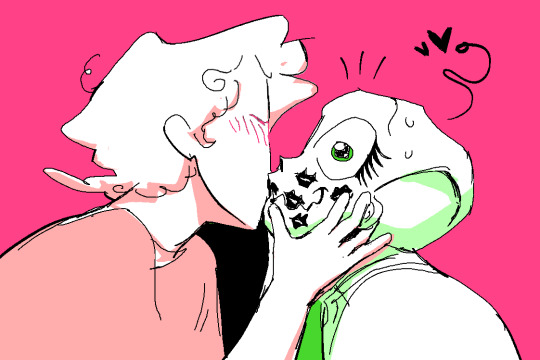

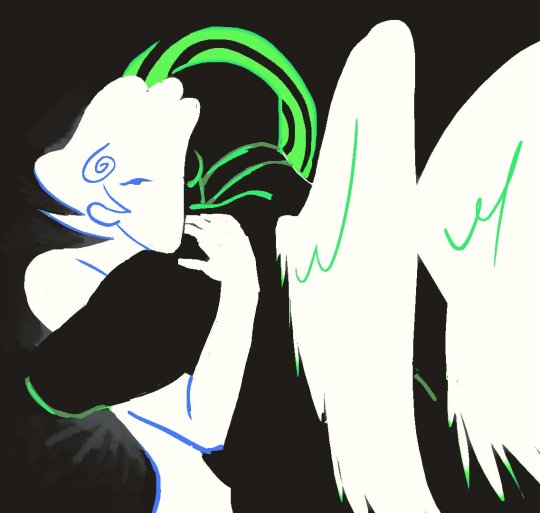
Need more callieroxy in the world.. (withering away) their yuri powers unmatched
#callieroxy#calliroxy#roxy lalonde#calliope#homestuck#callie homestuck#my art#zan0tix#The last one was inspired by the shape of water that movie is LITERALLYthem#I like how calliope is the character Made to be forgotten. Cast to the void. meant to become one with it. but roxy steals her from it.#Yuri so powerful roxy undooms the worlds most extensively engineered to be doomed in fiction girl.#I NEED TO LOCK IN AND MAKE MORE CALLIEROXY nobody understands their beautiful transfem love. i dont even give a swwag.
2K notes
·
View notes